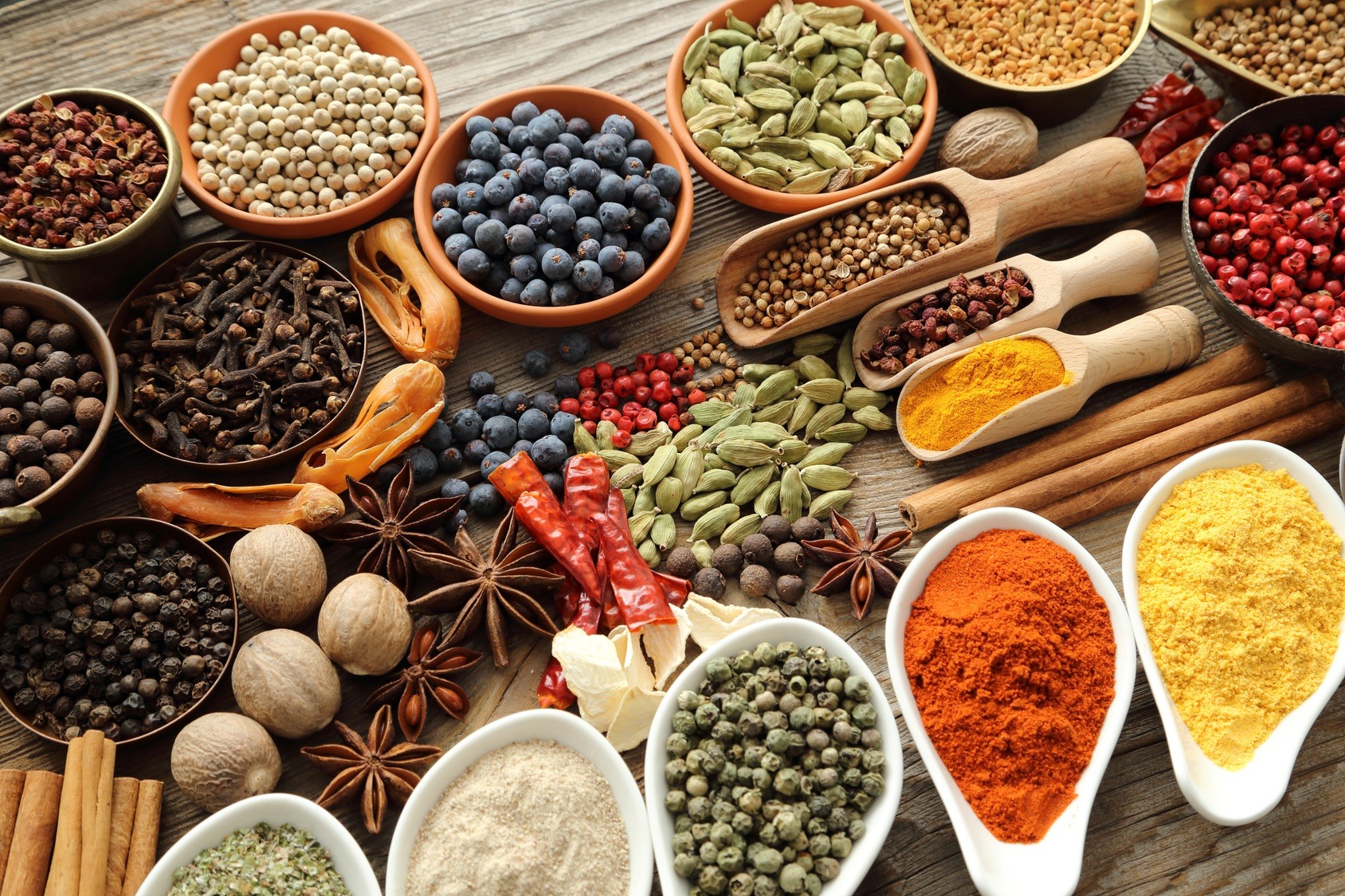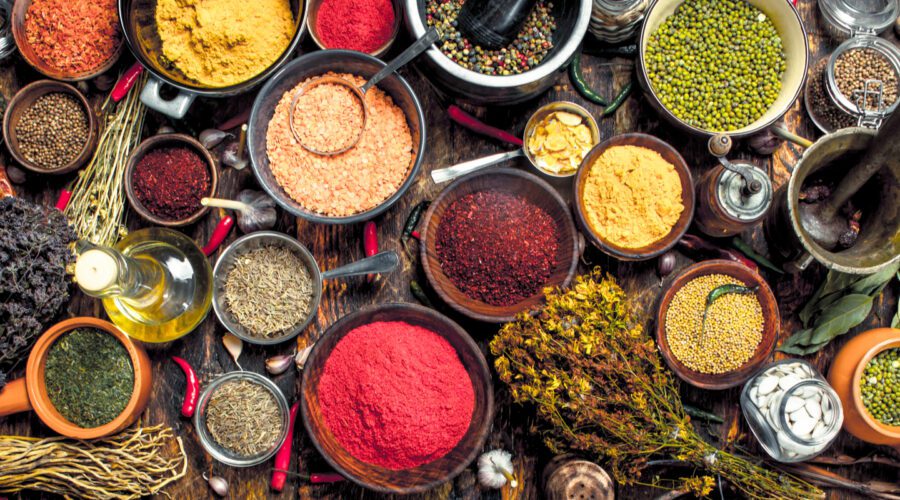Saffron is our love affair; a culinary crescendo that evokes a warmth of its own. But cooking is so much more than a single ingredient — it’s also about respect. It’s about respecting people from different cultures who dedicate their lives to creating something extraordinary with every dish they serve; family meals or five-star restaurants alike.
And that’s why we’re inviting everyone to join us – to share their recipes, explore new flavors and be part of something special. We know everyone has something delicious to offer!
For now, love yourself and enjoy this one ...
Spices add flavor, aroma and character to meals. If they are not handled and stored properly, the potency and freshness of spices can decrease over time. To maintain the quality of spices and ensure they have the desired effect in your culinary creations, it is important to understand the best practices when storing them.
Understanding [TAG16] Shelf Life
- Natural Shelf Life: Spices have different shelf lives. Whole spices last for up to 4 years. Ground spices are good for 2 years. Dried herbs can be kept for 1 year.
- Aroma is a good way to determine the freshness of a spice. If the spice smells weak, its potency has probably been diminished.
Optimal Store Conditions
- Store Spices in Dark and Cool Places: Spices are best stored in dark, cool places away from direct sunlight. Heat and light exposure accelerates the loss in flavor and color.
- Airtight Storage Containers: Spices should be stored in airtight containers, to prevent them from clumping up and losing flavor due to moisture and air.
- For long-term storage, opt for glass or ceramic containers. These materials do not absorb flavors and are contaminant-free.
Avoid Moisture & Heat
- Preventing moisture is one of the best ways to store spices. Spices should never be sprinkled directly over a pot that is steaming. Moisture can get into the container, causing it to spoil.
- Avoid Storing Spices Near Heat Sources. Do not store spices near heat sources, such as the oven or stove. Also, avoid storing them in places that are warm, such as above the fridge or near a dishwashing machine.
Organization and Labeling
- Mark spice containers with dates: To track the age of spices, mark the date they were purchased or opened. This is a step we often skip, but it's actually the best way to store spices.
- Organize and make spices easily accessible. It not only helps you cook more efficiently, but it also allows you to use older spices first.
Buy in Appropriate Quantities
- Buy only what you need: Only buy spices in quantities that you can use within a reasonable period of time. The spices will be at their best flavor.
- Bulk purchases: Store the excess of bulk purchases in a dark, cool place. Only refill smaller containers when needed.
Handling Spices
- Use a spoon, don't pour: To prevent cross contamination, measure the spices with a dry teaspoon, rather than directly from the container.
- Never touch spices with wet hands. Always use dry hands to avoid moisture entering the container.
Freezing to prolong life
- You can freeze some spices, such as whole seeds and nuts to prolong their shelf life. To prevent freezer burn, make sure they are tightly closed.
The right storage and handling is crucial to preserving and extending your spices' life. Follow these tips to store spices properly and ensure your spices are fresh, potent and ready for your culinary creations. Spices are the heart of your cooking. So, treat them with the respect they deserve.
Frequently Asked Questions
What are some of the best Thai spices you can find?
Galangal, coriander and turmeric are the best Thai spices. Some other good spices include cayenne pepper, clove, cardamom, black peppercorn, fennel seeds, star anise, and cloves.
Some other valuable spices include rose petals, bay leaves, curry leaves, pandan leaves, kaffir lime leaves, vanilla beans, tamarind pods, lemon grass, basil, and mint.
What is Thai spice used for?
We've all heard the term "Thai spice" thrown around without knowing exactly what it means. It makes our mouths water when we try it.
It isn't just any spice. It is an important ingredient that gives flavor and depth to bland dishes.
Thousands of recipes call for Thai spices, but few of them include the real deal. Let's discuss how to incorporate these tasty flavors into your meals.
As far back as ancient times, Thais have been cooking with herbs and spices to add flavor to food and beverages. Thai comes from the Sanskrit term for "to prepare".
Most Thais like spicy food, even today. This preference can be attributed to Thailand’s hot weather. It is difficult to stay warm when you don't have something to drink. Thais consume more chili peppers than Americans and Europeans.
It is a great way to learn more about Thai spices. There will be a large selection of ingredients available including dried chilies (fresh basil leaves), curry paste, ground black pepper, and curry paste.
Whole peppercorns, whole cloves, cinnamon sticks and star anise may also be found.
Thai cuisine uses both dry and wet spices. Dry spices are usually ground, while wet ones are crushed or pounded finely.
Dry spices can be added to any dish. Ground red pepper can be sprinkled on chicken soup, for example. To make a paste, wet spices are often mixed with butter or oil.
Wet spices are usually used in marinades, sauces, and dressings. The most popular wet spices are fish sauce (oyster sauce), sesame oil, sesame paste, curry paste, and Hoisin sauce.
You need to be able to match certain spices with Thai ingredients if you wish to make Thai food at home.
For example, red pepper flakes is recommended for beef. Use white pepper if you are using seafood like shrimp.
If you don’t have access or the means to order from an Asian market, it is possible to order online. This market has everything you need, including dried chilies as well as exotic herbs and spices.
So next time you get hungry, think about putting on a little extra heat by whipping up one of these tasty Thai recipes!
How to Store Spices
They should be kept out of direct sunlight and heat in an airtight container.
Place them in a dark cupboard to store spices for extended periods. This will preserve them and prevent any oxidation.
Keep your spices out of direct sunlight and in a cool dry place. A heater or window can cause the spice to lose its aroma and flavour.
Spices should be stored in an airtight tin or glass jar. Avoid storing spices in plastic containers.
After opening the seal, make sure to inspect it again. Humidity can cause spoilage.
Don't throw out any spice leftovers. You can make use of them by adding them to your favorite dishes. To prolong their shelf life you can freeze them.
What are the 11 spice ingredients in Indian cooking?
Indian cuisine is made up of eleven spices: coriander seeds; cumin seeds; fennel and mustard seeds; nigella and black pepper; cloves, cinnamon sticks; dry red chili powder; turmeric and cardamom.
These ingredients can also be used in almost any dish. These spices impart a distinct flavor to dishes such as curries (lentils), curries and chutneys. They also add a unique taste to rice, bread, and sweets.
The health benefits of spices can be found in their medicinal properties. To fight cancer cells, turmeric is an example. Bad breath is protected by cloves. Black pepper reduces cholesterol levels. Cinnamon lowers blood pressure. And ginger aids digestion.
A spice rack is a fantastic kitchen tool that allows you experiment with different combinations. You can make your spice mix or buy ready-made blends that contain many of the essential spices.
Some people are against adding spices to their food. They believe that spices only mask natural flavors and do nothing to improve them. However, it is possible to enhance the taste of your meals by adding a little salt or pepper.
Most chefs agree spices are essential to culinary art. Many dishes would be bland and tasteless without spices. Try a new recipe next time you feel adventurous.
Statistics
- According to Healthline, pink Himalayan salt is estimated to contain up to 84 minerals and trace elements, which gives the salt its special pink color. (spicecravings.com)
- Their 14 to 20 percent essential oil content means that cloves have the highest concentration of aroma compounds of any spice. (masterclass.com)
- According to the McCormick Science Institute, indigenous Indian spices were cultivated as early as the 8th century BC in the gardens of Babylon. (spicecravings.com)
External Links
[TAG22]
- Validation of Novel Lifestyle Inflammation Scores (PMC)
- Molecular mechanisms that curcumins have on tumorigenesis, angigenesis and metastasis. This article is from PubMed.
[TAG25]
[TAG28]
- Amazon.com. Spend less. Smile more.
- Amazon.com : Morton & Bassett Whole Nutmeg 1.9 Oz : Nutmeg Spices And Herbs : Grocery & Gourmet Food
[TAG31]
- PubMed: Inflammation and Metabolism Acute - PubMed
- PubMed: Aging and inflammation in the environment
How To
Are You able to make curry paste?
Curry paste is made from dried chillies, shallots and galangal root. It also contains lemongrass, galangal root (lemongrass), lemongrass, kaffir Lim leaf, garlic, shrimp paste and sugar. It's a common ingredient in Thai cuisine.
One of the most widely used condiments in Southeast Asia is curry paste. Curry paste adds a distinctive flavour to many dishes such as curries and soups, stir fries, stir-fries or rice dishes.
It is very easy to make it at home. Follow our step by step guide below.
Step1 - Prepare Ingredients
- Before starting the recipe, you will need to prepare all ingredients.
- Peel and chop shallots (about two cups). Next, chop galangal root into small pieces (3 inches in length) and place aside.
- Next, peel and slice garlic cloves (about four cloves). The lemongrass stems should be roughly 1/2 inch thick.
- After that, you will need to crush dried red chili peppers (about four tablespoons) before removing the seeds (optional).
- Next, trim the kaffir lime leaves into strips about 5 inches in length. Next, remove the white part from the stem and leave it alone.
- After draining the shrimp paste, wash it well and then coarsely smash it.
- Finally, measure out sugar and salt.
Step2 - Grind Ingredients
- Mix all ingredients until well combined.
- The texture should be similar to that of peanut butter.
- You can replace some oil with water if you wish to reduce the oil content of your dish.
Step3 - Add Coconut Milk
- Add coconut milk to the mixture and mix well.
- Slowly add coconut milk to ensure that the paste doesn't become too sticky.
- If you like it milder, reduce the number of chillies used and add more galangal root.
- You may prefer it hotter, so add more chilies or less galangalroot. The final result should taste delicious to you.
Step4 – Serve
- Top with your favorite food.
- Enjoy!
Resources:
 |
[TAG34]LET ME KNOW IN THE COMMENT SECTION WHAT YOU ALL WOULD LIKE TO SEE ME TALK ABOUT IN OUR NEXT VIDEO | I REALLY APPRECIATE YOU ALL!! THANK YOU FOR 168K |
 |
[TAG35]Better Sleep, More Energy, Higher Consciousness - START YOUR FREE 2-WEEK FLFE TRIAL NOW (no credit card needed) https://tm179.isrefer.com/go/TryFLFEfree/In |
 |
[TAG36]definition of spices |
 |
[TAG37]My Recipe and Vlog Channel Link:- https://www.youtube.com/channel/UCi5pSJeRu1fbXK4bzIVgSkw Hello Friends, Welcome back to my another video! Today […] |
 |
[TAG38]CARDAMOM E-AUCTION SPICES BOARD OFFICIAL |
 |
[TAG39]Important spices in cooking |
 |
[TAG40]This Is The Situation Room, Kenya's Biggest Conversation! HOSTS: Eric Latiff, Ndu Okoh & CT Muga PRODUCER: Ednah Ombaso EXECUTIVE PRODUCER: Tom |
 |
[TAG41]Subscribe to my channel ▶https://bit.ly/30eqjsu Uncle Rural Gourmet's secret recipe of hot pot, […] |
 |
[TAG42]Herbs, spice & everything nice, these blog and articles explain the many uses of spices, including spices for weight loss, spices for brewing, and how to store |
 |
[TAG43]Just a quick live thank you to everyone who has supported this wacky little channel of ours. Join me (and whoever else on the team is still awake) to drink |
 |
[TAG44]India accidentally hired a DEA agent to kill American citizens, federal prosecutors allege. The DOJ filed charges against a man they allege was working with |
/spices-5689d3013df78ccc1533efad.jpg) |
[TAG45]spices | Visit our blog for recipes, cooking tips and techniques as well as our staff's favorite eats and travel adventures. |
 |
[TAG46]https://www.letsdig18.com/ for shirts and more |
 |
[TAG47]something feels VERY WRONG!!! Link for Patreon/Discord community is here. This is to access our private community with weekly live calls and many other |
 |
[TAG48]This spice blog writes about Indian fenugreek, Canadian coriander, Egyptian dill weed, Syrian Aleppo pepper, Granada nutmeg, & more from around the world. |
 |
[TAG49]World of Spice is your online store for a massive range of High Quality Herbs Spices and Seasonings. Wholesale, Foodservice and Catering High Quality Herbs |
.png)





